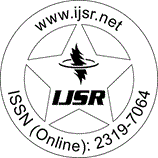Downloads: 105
India | Medicine Science | Volume 4 Issue 5, May 2015 | Pages: 3029 - 3032
Modified Constraint Induced Movement Therapy (mCIMT) for Children with Hemiplegic Cerebral Palsy to Improve Upper Extremity Function: Pilot Study
Abstract: The purpose of this study was to identify effectiveness of modified Constraint Induced Movement Therapy (mCIMT) to improve upper extremity function in children with hemiplegic Cerebral Palsy. Ten children with hemiplegic cerebral palsy were included through convenience sampling procedure. The results found that there is statistically significant difference (t = -4.68, p < 0.01) between pre test & post test total score of QUEST scale. Further it found that there is statistically significant difference between pre test & post test scores of all QUEST components (t=-3.07, p<0.05 for dissociate moment, t=-2.93, p<0.05 for grasps, t=-5.20, p<0.01 for weight bearing, t=-22.90, p<0.05 for protective extension). Finally, this study concluded mCIMT for small children with hemiplegic cerebral palsy seems to be an important intervention method for improving upper extremity function.
Keywords: hemiplegic cerebral palsy, Modified constraint induced movement therapy, upper extremity function, QUEST
How to Cite?: Dr. U. Ganapathy Sankar, "Modified Constraint Induced Movement Therapy (mCIMT) for Children with Hemiplegic Cerebral Palsy to Improve Upper Extremity Function: Pilot Study", Volume 4 Issue 5, May 2015, International Journal of Science and Research (IJSR), Pages: 3029-3032, https://www.ijsr.net/getabstract.php?paperid=SUB154886, DOI: https://dx.doi.org/10.21275/SUB154886
